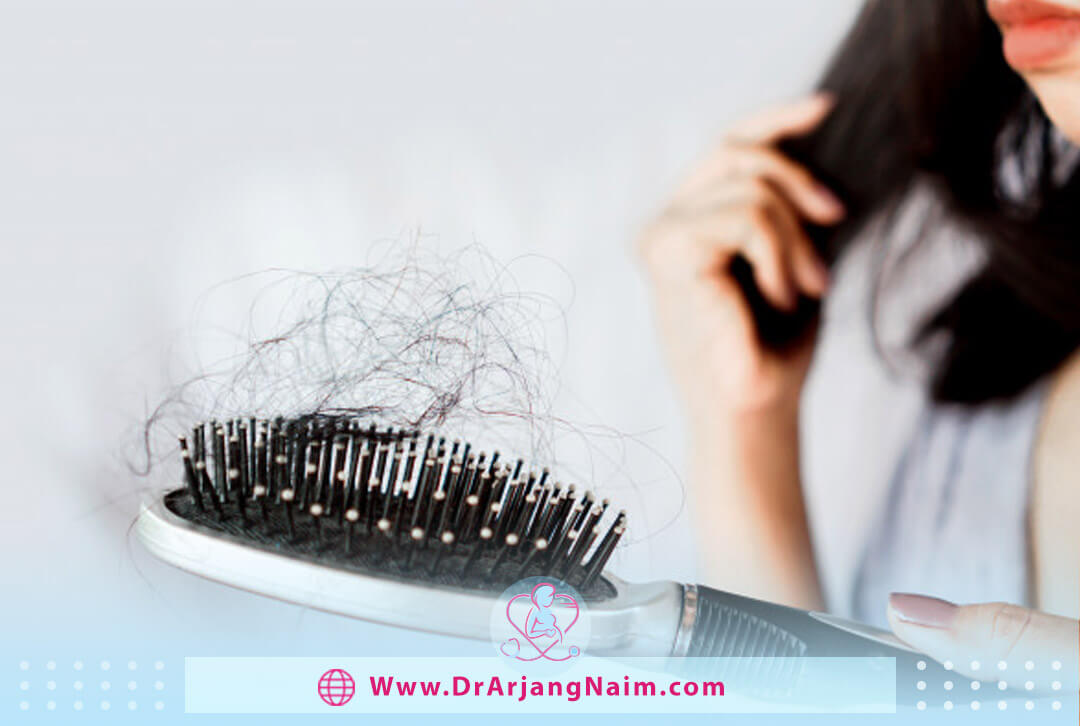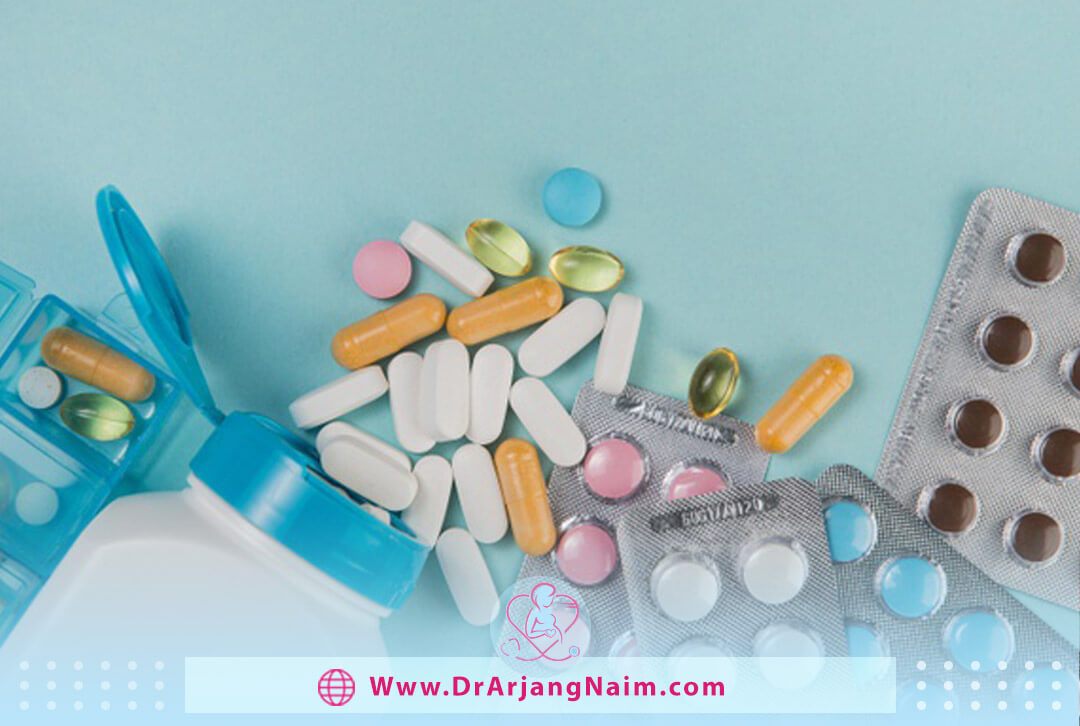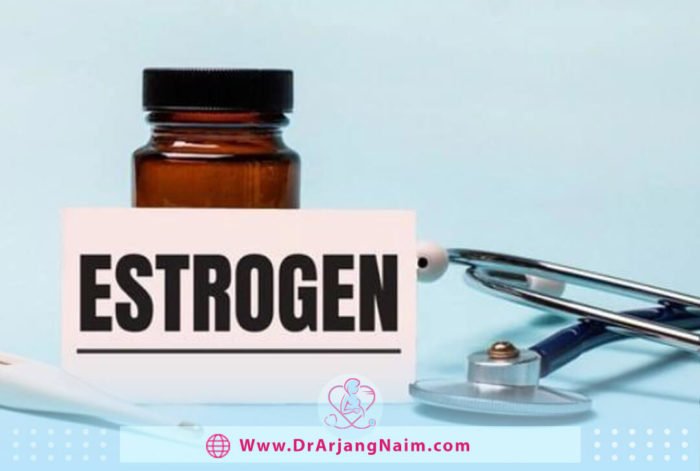Estrogen dominance means that the body has a lot of estrogen compared to progesterone. Estrogen balance is essential for the body to function properly. When hormones are in balance, everything works almost as it should, but when that balance is upset, there are many problems.
In women, estrogen is often produced in the ovaries, although it is also produced by fat cells and the adrenal glands. Estrogen is known as the female hormone. Testosterone is known as the male hormone but is found in both men and women. On average, estrogen levels are higher in women, and testosterone is higher in men. When estrogen levels are high, or progesterone levels are low, the result is a dominance of estrogen and the unpleasant symptoms it causes.
What is estrogen?
Estrogens are a group of sex hormones that create and maintain female characteristics in the human body. These hormones cause the formation of secondary female characteristics, including the breasts, the regulation of the menstrual cycle, the reproductive system, and their growth. Estrogen imbalance in the body of women leads to the production of some diseases and physical changes.
Types of estrogen
Estrogen plays an important role in many bodily functions. Different types of estrogen include:
- Estrone: This type of estrogen is present in the body after menopause. It is a weaker form of estrogen and can be converted to other forms of estrogen if needed.
- Estradiol: Both men and women produce estradiol, which is the most common type of estrogen in women during the reproductive years. Too much estradiol can lead to acne, loss of libido, osteoporosis, and depression. Very high levels can increase the risk of uterine and breast cancer. However, low levels can lead to weight gain and cardiovascular disease.
- Estriol: Estriol levels increase during pregnancy because they help the uterus grow and prepare the body for labor. Estriol levels peak just before birth.
Function
Estrogen is involved in the function of the following organs:
- Ovaries: Estrogen helps stimulate the growth of egg follicles.
- Vagina: Estrogen maintains the thickness of the vaginal wall and causes lubrication.
- Uterus: Estrogen strengthens and maintains the mucous membrane covering the uterus and regulates the flow and thickness of uterine mucus secretions.
- Breasts: The body uses estrogen to form breast tissue. This hormone also helps prevent milk flow after weaning.
Other functions of estrogen include:
- Help feel happy and energized
- Promotes a healthy libido
- Protects bones
- Benefits brain function, cognition, and mental sharpness
- Supports healthy, supple skin and hair
- Protects the heart and cardiovascular system
- Supports metabolism
Symptoms of estrogen dominance

The symptoms of estrogen dominance are similar to the symptoms of menopause or even PMS. Detection of estrogen dominance requires careful and timely testing.
Hair loss
In general, adequate levels of estrogen reduce the effects of testosterone. This means that it can prevent hair loss that is naturally associated with male hormones.
Estrogen is a powerful hormone in the female body, and too much of it may lead to estrogen dominance. The body normally breaks down estrogen and uses it before it can reach high levels. But when the body produces a lot of estrogens while it has a small amount of progesterone, the body is not able to metabolize it quickly; an imbalance can lead to problems such as hair loss.
As women get older, they may experience some hair loss. This can happen in the perimenopause or menopausal period. But if it does occur before menopause, it may be a sign of estrogen dominance.
Mood swings
A change in mood can suddenly change from a feeling of happiness to a feeling of depression and then to another feeling. If a person has a dramatic change in mood for no apparent reason, she may experience estrogen dominance. High estrogen or low levels of progesterone in the body can lead to irritability, anxiety, depression, and exaggerated symptoms of PMS. The dominance of estrogen affects the chemical balance of neurotransmitters in the brain, especially serotonin and GABA, which affect mood. When these neurotransmitters become unbalanced, mood swings may occur.
Low libido
Low libido is defined as the loss of sexual thoughts and urges as well as decreased libido. Decreased libido can be caused by a variety of issues, including hormonal imbalances. Low libido is usually experienced between the ages of 40 and 55. During this time, hormone levels begin to decline, resulting in an imbalance of sex hormones. To improve sexual status, estrogen and progesterone levels must be balanced.
Estrogen dominance causes various sexual problems, including vaginal dryness, loss of libido, and sexual dysfunction. Excess estrogen can also cause heavy menstruation, fibrocystic breasts, fatigue, depression and water retention. Each of these symptoms can lead to decreased libido.
Increased PMS
Premenstrual syndrome (PMS) can include symptoms that can occur two weeks before the onset of menstruation. Mood swings, irritability, and even depression are among the emotional symptoms that are often associated with PMS. Physical manifestations range from bloating, water retention and breast tenderness to headaches, fatigue, and digestive problems. The first step, as always, is to identify the root of the problem. In the case of PMS, the root is often dominated by estrogen. When estrogen and progesterone are out of balance, it can make PMS symptoms worse.
Irregular periods
Hormone imbalances in women often disrupt their menstrual cycle. Menstrual periods can occur more or less and may also change over time. One of the main functions of estrogen is to create the inner layer of the uterus. If there is excess estrogen, more inner lining is created, causing heavy menstrual periods. Heavy menstruation or irregular menstruation can be associated with both increased estrogen and low progesterone.
For more information, refer to the Menometrorrhagia article.
Bloating
Many women may experience bloating every month. Often, PMS or menopause can be the root cause or, more specifically, changes in female hormones.
Unfortunately, weight gain, bloating, and water retention are common complaints of many women, and hormones often play a role.
Women experience bloating during their menstrual cycles at different times. Most women who have regular periods can estimate when it happens in their cycle. In cases of estrogen dominance, bloating may occur at another time. Irregular and heavy menstruation can also cause unexpected bloating.
Weight gain
The dominance of estrogen causes overweight in the belly, thighs, hips, and butt. As weight increases, the number of fat cells in the body increases, then fat cells produce estrogen, creating a vicious cycle to gain weight and increase estrogen levels. As the body dominates estrogen, the body’s metabolism decreases, resulting in weight gain. Abdominal tissues retain more water and thus swell. Insulin is secreted abnormally, resulting in constant hunger with cravings for sweets. If left untreated, estrogen overdose can increase the risk of a variety of diseases such as heart disease, thyroid problems, metabolic syndrome, and diabetes.
Sleep issues
Researchers have discovered that one of the causes of insomnia in women is hormonal imbalance. The two main hormones that cause insomnia and other sleep problems are estrogen and progesterone.
Estrogen stimulates the nervous system. Therefore, insomnia occurs when there is a lot of estrogen in the body. Estrogen can also impair the body’s ability to produce melatonin. Melatonin is a natural chemical that makes you feel drowsy in the dark. Progesterone acts as a natural sedative and improves the health of sleep cycles. Deficiency of this hormone can affect the quality of sleep.
Fatigue
Women who experience estrogen dominance often experience uninterrupted fatigue. Fatigue is defined as a lack of energy or a feeling of extreme tiredness. This symptom can occur even if you get enough sleep.
Memory Problems
Hormones affect brain health. When estrogen dominance occurs, you may feel foggy and may have more difficulty remembering people, events, places, or things. Many experts believe that estrogen affects neurotransmitters. In the beginning, women may experience mild forgetfulness. However, over time, memory fog can intensify. Women who experience estrogen dominance may be misdiagnosed with dementia or early-stage Alzheimer’s disease.
Fertility issues
Estrogen dominance can prevent ovulation. When a woman does not ovulate or does not ovulate regularly, her ability to conceive is greatly reduced. Overweight or obese women are at risk for increased fertility problems because an increase in fat cells increases estrogen production. Excess estrogen releases no eggs and acts as a natural contraceptive. When ovulation does not occur, no egg is released, which leads to fertility.
Uterine fibroids
Uterine fibroids grow in response to increased estrogen levels. It is more common in women in their 30s and 40s and perimenopause. When menopause occurs, estrogen levels in the body decrease and fibroids often shrink on their own.
Symptoms of high estrogen in men
Although it is called the female hormone, the male body also makes estrogen. A healthy balance of estrogen and testosterone is important for sexual development. When these hormones are not balanced, sexual growth and function are affected. Symptoms of high estrogen in men include:
- Infertility: Estrogen is partly responsible for producing healthy sperm. When estrogen levels rise, sperm levels may drop, leading to fertility problems.
- Gynecomastia: Estrogen stimulates the growth of breast tissue. Men with excess estrogen may develop gynecomastia, which can lead to larger breasts.
- Erectile dysfunction (ED): Men with high estrogen levels may have difficulty getting or maintaining an erection.
Diagnosis

If your doctor suspects high estrogen, he or she may order a blood test to check hormone levels. The results show the level of estrogen. Blood estrogen levels are measured in pictograms per milliliter (pg/mL). Estrogen levels vary from person to person, depending on age and gender. This level also fluctuates during the menstrual cycle. Estradiol is the major form of estrogen, while estrone and estriol are minor forms. Steriol levels are very low in women who are not pregnant.
Females
Normal blood estradiol levels in women include:
- Children and adolescents: up to 350 pg/ml
- Adults: 15–350 pg/ml
- Postmenopausal adults: less than 10 pg/ml
Blood levels of estrone are:
- Children and adolescents: up to 200 pg/ml
- Adults: 17–200 pg/ml
- Postmenopausal adults: 7–40 pg/ml
Males
Normal blood estradiol levels in men include:
- Children and adolescents: up to 40 pg/ml
- Adults: 10–40 pg/ml
Blood levels of estrone are:
- Children and adolescents: up to 60 pg/ml
- Adults: 10–60 pg/ml
Top foods high in estrogen
Phytoestrogens have a chemical structure similar to the structure of estrogen and may mimic its hormonal actions. Phytoestrogens bind to estrogen receptors in cells and potentially affect estrogen function in the body. However, not all phytoestrogens work the same way.
Phytoestrogens have been shown to have estrogenic and antiestrogenic effects. This means that while some phytoestrogens have estrogen-like effects that result in increased estrogen levels in the body, others block its effects and lower estrogen levels. Phytoestrogens are one of the most controversial topics in nutrition and health due to their complex actions. While some researchers have raised concerns that high intake of phytoestrogens may cause hormonal imbalances, most evidence has linked them to positive health effects.
Best dietary sources of phytoestrogens
The best dietary sources of phytoestrogens include:
- Flaxseeds: Flaxseeds are a rich source of lignans, chemical compounds that act as phytoestrogens. Eating flaxseed is associated with a reduced risk of breast cancer.
- Soy: Soy contains large amounts of isoflavones, phytoestrogens that may mimic the effects of estrogen and reduce the risk of breast and prostate cancer. Soy isoflavones can mimic the effects of natural estrogen and cause estrogen-like activity in the body. They may decrease or increase blood estrogen levels.
- Peaches: Peaches are sweet, delicious, and have a variety of nutrients. They are rich in lignans, a type of phytoestrogen.
- Garlic: Garlic is rich in phytoestrogens along with its distinctive taste and health benefits.
- Sesame Seeds: Sesame seeds are a powerful source of phytoestrogens. Eating sesame seeds regularly increases estrogen activity in postmenopausal women.
- Cruciferous vegetables: Cruciferous vegetables are a large group of plants with diverse textures, flavors, and nutrients. Broccoli, cauliflower, Brussels sprouts, and cabbage are all cruciferous vegetables and rich in phytoestrogens. Cauliflower and broccoli are rich in secoisolariciresinol, a phytoestrogen of lignans. In addition, sprouts and Brussels sprouts are rich in coumestrol, another type of plant nutrient that has been shown estrogenic activity.
- Dried fruits: Dried fruits are a powerful source of phytoestrogens. Dried apricots, dates, and prunes are the dried fruits with the highest content of phytoestrogens.
- Tofu: Tofu is made from coagulated soy milk that is squeezed into white blocks. It is a popular source of plant protein, especially in vegetarian diets. It is also a concentrated source of phytoestrogens, mainly isoflavones.
Treatment

To manage estrogen dominance, the doctor may prescribe medications, recommend surgery, or recommend following a specific diet.
Medication
If high estrogen is produced during hormone therapy, the doctor may change the hormone therapy program to create a healthier hormonal balance. If there is a type of cancer that is sensitive to estrogen, high levels of estrogen can make the cancer worse. The doctor may prescribe drugs to prevent cancer cells from attaching to estrogen. For example, tamoxifen may be prescribed. An aromatase inhibitor may also be prescribed; this type of drug prevents the conversion of the aromatase enzyme to estrogen. This class of medicine includes the following:
- Anastrozole (Arimidex)
- Exemestane (Aromasin)
- Letrozole (Femara)
In other cases, the doctor may prescribe medication to stop the production of estrogen in the ovaries, including:
- Goserelin (Zoladex)
- Leuprolide (Lupron)
Surgery
If there is a type of cancer that is sensitive to estrogen, doctor may also recommend an oophorectomy. This is a type of surgery used to remove the ovary. Because the ovaries produce the most estrogen in a woman’s body, removing them lowers estrogen levels. The doctor may recommend an oophorectomy if women are at high risk for breast or ovarian cancer. If one or more of the following is true, the person is at high risk:
- Strong family history of breast cancer or ovarian cancer
- Positive test for a specific mutation in the BRCA1 or BRCA2 gene
- Positive test for a specific mutation in other genes associated with cancer risk According to the National Cancer Institute (NCI), removal of both ovaries appears to reduce the risk of breast cancer in high-risk patients by about 50 percent. The doctor may also use radiation therapy to inactivate ovaries.
Diet
To help lower estrogen levels, the doctor may recommend changes in eating habits. For example, they may encourage a person to eat a low-fat and high-fiber diet, also recommend losing weight.
Conditions related to high estrogen
High levels of estrogen can be more dangerous than some other conditions. For example, elevated estrogen levels are a risk factor for breast cancer and ovarian cancer. According to the American Cancer Society (ACS), estrogen dominance can also increase the risk of endometrial cancer. High levels of estrogen may put the person at higher risk for blood clots and stroke. Estrogen concentrations may also increase the risk of thyroid dysfunction. This can cause symptoms such as fatigue and weight change.
Other solutions

There are many factors to consider in treating estrogen dominance, some of which include:
- Exercise: Exercise balances hormones in several ways. Exercise supports the body’s natural metabolic process and helps reverse the breakdown of estrogens into 2-hydroxy or “good” estrogens. These estrogens are broken down more easily and cause fewer negative symptoms.
- Eliminate Regularly: If there is no regular movement, the body cannot get rid of excess estrogen. Lack of adequate digestive enzymes or low stomach acid is possible cause of estrogen recirculation. Low magnesium levels, low fiber intake, dehydration, and dysbiosis or bacterial imbalance in the gut can also help with poor excretion and estrogen dominance.
- Reduce Stress: Pregnenolone can be converted to progesterone and cortisol. If the need for cortisol production increases, the overall access to progesterone decreases. The result is estrogen dominance. Therefore, using stress reduction strategies can be helpful.
In addition, maintaining a healthy weight with adequate muscle mass promotes healthy hormone production. Adipose tissue contains the active enzyme aromatase, an enzyme that converts androgens to estrogen. Thus, while some body fat is needed for balanced hormone production, excess body fat can increase estrogen production in men and women. Incorporating moderate physical activity into your daily routine promotes weight balance as well as balanced hormone metabolism.
The bottom line
Estrogen is the main sex hormone in women, but it is present in both men and women. High estrogen levels can cause widespread symptoms and may increase the risk of some health problems, including breast and ovarian cancer. Anyone experiencing symptoms of high estrogen should see a gynecologist for a blood test.
Dr. Arjang Naim examines the patient’s condition and performs accurate hormonal tests to determine if the symptoms are due to a hormonal imbalance or something else. If the person has a high estrogen level, he offers the most appropriate treatment according to the person’s condition.
Additional questions
- How can you treat and prevent period bloating?
Here come the most effective premenstrual bloating remedies. Included:
- Eat the right foods
- Drink lots of water
- Skip alcohol and caffeine
- Exercise regularly
- Consider medication
- What are the 3 main sex hormones?
- Androgens
- Estrogens
- Progestogens
- What does GABA do for your body?
Gamma-aminobutyric acid (GABA) is a neurotransmitter, a chemical messenger in the brain. It slows down the brain by blocking certain signals in the central nervous system.
- Do isoflavones increase estrogen?
In humans, isoflavones mimic the synthesis of estradiol in the body, which is a precursor to the hormone estrogen and can increase total serum estrogen in the body.
- Does magnesium lower estrogen?
Magnesium promotes healthy estrogen clearance. By supporting the enzyme COMT in the liver, causes the healthy elimination of estrogen.
References
https://www.news18.com/news/lifestyle/estrogen-dominance-signs-myupchar-3169046.html
https://www.healthline.com/health/womens-health/how-to-increase-estrogen
https://www.medicalnewstoday.com/articles/277177#supplements
https://www.webmd.com/diet/foods-high-in-estrogen#1
https://www.healthline.com/health/high-estrogen#outlook
https://www.medicalnewstoday.com/articles/323280#takeaway




